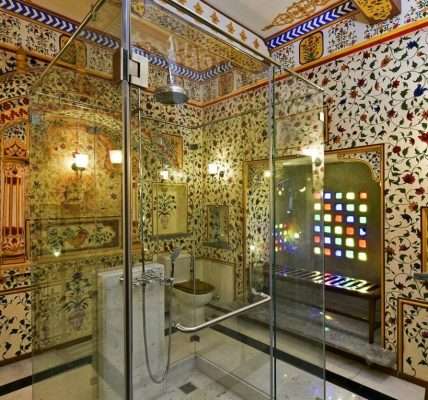Navigating the world of water heating solutions can be complex, especially when considering the upfront investment․ Understanding the factors influencing the price of an inline water heater, sometimes referred to as a tankless water heater, is crucial for making an informed decision․ Several elements contribute to the overall cost, including the unit’s heating capacity, the brand’s reputation, and the complexity of the installation process․ Ultimately, determining how much does an inline water heater cost requires careful evaluation of individual needs and circumstances, as well as diligent research․
Factors Influencing the Price of Inline Water Heaters
The price of an inline water heater isn’t a fixed number․ It varies depending on several key factors:
- Heating Capacity (Gallons Per Minute ⎯ GPM): Higher GPM ratings, meaning the heater can supply more hot water simultaneously, generally translate to a higher price․ Consider your household’s hot water demands․
- Fuel Type (Electric vs․ Gas): Electric inline heaters are often cheaper to purchase initially, but gas models may offer lower operating costs due to lower fuel prices․ Installation costs can also vary significantly between the two․
- Brand Reputation and Features: Established brands with advanced features (e․g․, digital displays, self-diagnostics) typically command a premium price․
- Installation Costs: This is a significant factor often overlooked․ Installation can involve electrical work, plumbing modifications, and venting, all of which add to the overall expense․
Cost Breakdown: Initial Purchase vs․ Long-Term Savings
While the initial cost of an inline water heater might seem high, it’s important to consider the potential long-term savings․
Initial Purchase Costs:
Inline water heaters can range from a few hundred dollars to several thousand dollars depending on the factors mentioned above․ A small electric unit for a single bathroom might cost around $300-$500, while a high-capacity gas model for a large household could exceed $2,000․
Long-Term Savings:
- Energy Efficiency: Inline heaters only heat water when needed, eliminating the standby heat loss associated with traditional tank heaters․ This can translate into significant energy savings over time․
- Longevity: Inline water heaters often have a longer lifespan than tank heaters, potentially reducing replacement costs in the long run․
- Space Saving: Their compact size frees up valuable space in your home․
Installation Considerations and Associated Expenses
Professional installation is highly recommended for inline water heaters, especially gas models․ This ensures proper venting, gas line connections, and electrical wiring․
Typical Installation Costs:
Installation costs can vary widely depending on the complexity of the job․ Factors influencing cost include:
- Existing Plumbing and Electrical Infrastructure: Upgrading existing systems to accommodate the new heater can increase costs․
- Permitting Requirements: Local building codes may require permits for water heater installations, adding to the overall expense․
- Labor Rates: Plumber and electrician labor rates vary by location․
Expect to pay anywhere from $500 to $2,000 or more for professional installation, depending on the specific circumstances․ It is imperative to get several quotes before choosing a contractor․
Making an Informed Decision About Inline Water Heater Cost
Ultimately, understanding how much an inline water heater costs is a multifaceted process that requires careful consideration of your hot water needs, budget, and installation requirements․ Before making a final decision, it’s advisable to consult with a qualified plumber or HVAC professional to assess your specific situation and get an accurate estimate․ Careful research and planning will help you determine if an inline water heater is the right choice for your home and budget․ Remember to weigh the initial investment against the potential long-term savings and benefits․ The final cost can be justified with the energy savings․
But how do you truly quantify those long-term savings? Are you prepared to compare energy bills meticulously month after month to see the difference? Shouldn’t you also factor in the potential increase in your home’s value with a modern, energy-efficient appliance? And what about the environmental impact – are you considering the reduced carbon footprint of a tankless system?
Exploring Alternative Water Heating Solutions
Are inline water heaters the only option worth considering? What about traditional tank water heaters? Are they automatically less expensive in the long run despite their inefficiencies? Should you explore heat pump water heaters, and are they suitable for your climate and home layout? Have you considered the space requirements of each type and how that might impact your decision?
Tank vs․ Tankless: A Quick Comparison
Is a constant supply of hot water more important to you than potential energy savings? Do you have the gas line capacity required for a high-output tankless model? Are you aware that some electric tankless models may require significant electrical panel upgrades? Could a smaller, point-of-use tankless heater be a more cost-effective solution for specific faucets or appliances?
Financing Options and Rebates
Are there any rebates or tax credits available in your area for purchasing energy-efficient water heaters? Should you consider financing options to spread out the initial cost? Would a home equity loan or line of credit be a viable way to fund the purchase and installation? And are you aware of any potential hidden fees or charges associated with financing?
So, with all these factors in mind, are you now better equipped to assess how much does an inline water heater cost for your specific needs and circumstances? Have you gathered enough information to make a confident and informed decision about the best water heating solution for your home and lifestyle? Remember, the perfect choice is the one that balances cost, performance, and long-term value․

